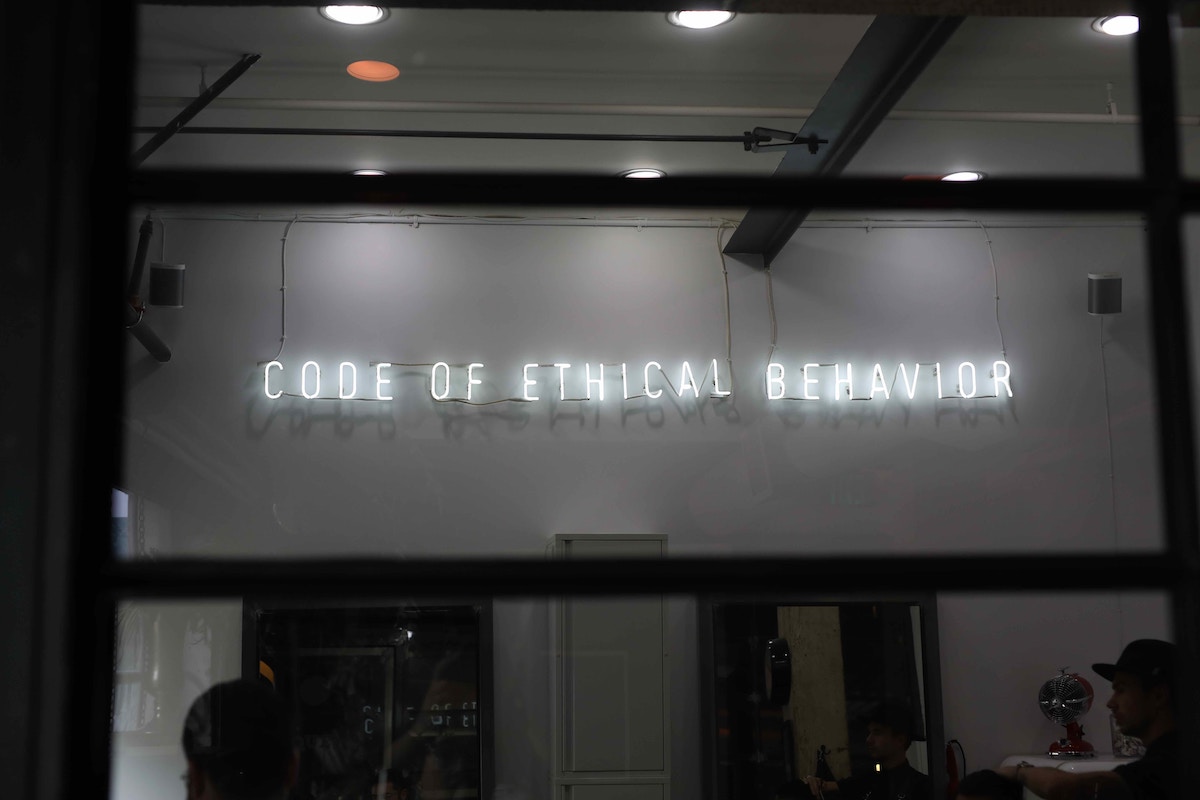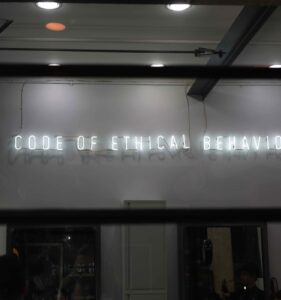When faced with complex ethical dilemmas, individuals and organizations often find themselves at a crossroads, unsure of how to navigate the intricate terrain of moral choices. Ethical decision-making is a crucial skill that extends across various aspects of life, from personal relationships to business practices and public policies. In this comprehensive guide, we will explore the ten essential steps to making ethical decisions, offering insights and strategies to help you tackle ethical challenges with clarity and confidence.
Understanding the Foundation of Ethics
Before delving into the steps of ethical decision-making, it’s essential to establish a solid understanding of ethics itself. Ethics is the study of moral principles and values that govern human behavior. It is a guiding framework that helps individuals distinguish between right and wrong. To make ethical decisions, one must be well-versed in the foundational ethical theories and principles that underpin moral reasoning. These theories include:
1. Deontology
Deontology is an ethical theory that asserts that actions are intrinsically right or wrong, regardless of their consequences. It places emphasis on duty, rules, and moral principles. When using deontological ethics in decision-making, individuals prioritize doing what is morally right, regardless of the outcome.
2. Utilitarianism
Utilitarianism, on the other hand, evaluates the morality of actions based on their consequences. This theory suggests that the right course of action is the one that maximizes overall happiness or utility. In utilitarian ethics, decisions are made by considering the potential outcomes and selecting the one that leads to the greatest benefit for the majority.
3. Virtue Ethics
Virtue ethics focus on the character and virtues of individuals rather than specific rules or consequences. It encourages individuals to develop virtuous qualities such as honesty, courage, and compassion. Decisions guided by virtue ethics are based on personal character and integrity.
The 10 Steps to Ethical Decision-Making
Now that we have a solid foundation in ethics, let’s explore the ten essential steps to making ethical decisions. These steps are designed to provide a structured approach to tackle complex moral dilemmas effectively.
Step 1: Identify the Ethical Issue
The first step in ethical decision-making is recognizing that an ethical issue or dilemma exists. This often involves identifying a situation where there are conflicting values, interests, or principles. It’s crucial to clearly define the problem and understand the ethical dimensions at play.
Step 2: Gather Information
Once you’ve identified the ethical issue, gather all relevant information. This may include facts, figures, and the perspectives of all parties involved. A comprehensive understanding of the situation is essential for making an informed decision.
Step 3: Identify Stakeholders
Identify all the stakeholders who are directly or indirectly affected by the decision. This step is critical as it helps you consider the interests, rights, and concerns of all parties involved. Ethical decisions should aim to balance these interests fairly.
Step 4: Consider Ethical Theories and Principles
Drawing from your knowledge of ethical theories (deontology, utilitarianism, virtue ethics), assess the situation from different moral perspectives. Consider which ethical principles and values apply and how they might guide your decision.
Step 5: Brainstorm and Evaluate Options
In this step, brainstorm various courses of action that could address the ethical issue. Evaluate the pros and cons of each option, taking into account potential consequences, risks, and benefits. Be open to creative solutions that respect ethical principles.
Step 6: Make a Decision
After careful deliberation, make a decision based on the ethical analysis conducted in the previous steps. Choose the course of action that aligns most closely with your ethical principles and values.
Step 7: Implement the Decision
Once you’ve made a decision, put it into action. Ensure that the chosen course of action is executed effectively and consistently with your ethical intentions.
Step 8: Monitor and Review
After implementation, continuously monitor the situation and its outcomes. Assess whether your decision is achieving the desired ethical goals and whether any adjustments or corrections are needed.
Step 9: Reflect on the Process
Take time to reflect on the entire ethical decision-making process. Consider what you’ve learned, how your values and principles guided your decision, and whether there are any improvements to be made for future ethical dilemmas.
Step 10: Learn and Adapt
Ethical decision-making is a continuous learning process. Use the insights gained from each experience to refine your ethical judgment and decision-making skills. Adapt your approach as needed to become a more effective ethical decision-maker.
Factors Influencing Ethical Decision-Making
While the ten steps outlined above provide a structured approach to ethical decision-making, it’s essential to recognize that various factors can influence the process. These factors may either facilitate or hinder the ability to make sound ethical decisions:
Culture and Values
Cultural norms and values play a significant role in shaping individual and collective ethical perspectives. What is considered ethical in one culture may differ from another. Being aware of cultural influences is crucial in a globalized world.
Personal Biases
Every individual has their own set of biases and prejudices that can affect their judgment. Recognizing and addressing these biases is essential for making objective and ethical decisions.
Peer Pressure
The influence of peers and social circles can sometimes lead individuals to make unethical choices. It’s important to have the courage to resist peer pressure and uphold one’s ethical principles.
Organizational Culture
In a professional context, the culture of an organization can strongly influence ethical decision-making. An organization that prioritizes ethics and integrity is more likely to foster ethical behavior among its members.
Legal Framework
Laws and regulations can provide a clear ethical framework in some situations. However, it’s essential to remember that legality does not always equate to ethics. Some actions may be legal but still unethical.
Case Studies in Ethical Decision-Making
To further illustrate the practical application of the ten steps to ethical decision-making, let’s examine a few real-life case studies:
Case Study 1: The Enron Scandal
One of the most infamous corporate scandals in history, the Enron scandal involved fraudulent financial reporting and unethical accounting practices. Enron executives manipulated financial statements to hide the company’s financial problems, leading to the collapse of the company and severe financial consequences for shareholders and employees.
Steps Applied:
- Step 1: Identify the Ethical Issue – The ethical issue here was the fraudulent financial reporting and unethical accounting practices.
- Step 2: Gather Information – Comprehensive financial data and whistleblower accounts were gathered.
- Step 3: Identify Stakeholders – Shareholders, employees, and the broader financial market were affected.
- Step 4: Consider Ethical Theories and Principles – Deontology and virtue ethics would have condemned such fraudulent actions.
- Step 5: Brainstorm and Evaluate Options – The executives could have chosen transparency and honesty instead of fraudulent practices.
- Step 6: Make a Decision – Unfortunately, Enron’s executives chose to continue their unethical practices.
- Step 7: Implement the Decision – Fraudulent financial reporting continued.
- Step 8: Monitor and Review – Eventually, the unethical practices were exposed.
- Step 9: Reflect on the Process – Enron’s case serves as a stark reminder of the consequences of unethical decisions.
- Step 10: Learn and Adapt – The Enron scandal led to increased regulatory oversight and reforms in corporate governance.
Case Study 2: The Trolley Problem
The trolley problem is a classic ethical dilemma that explores the moral implications of choosing between two undesirable outcomes. In this scenario, a runaway trolley is headed towards five people tied to a track. You have the option to pull a lever and divert the trolley onto another track, but there is one person tied to that track.
Steps Applied:
- Step 1: Identify the Ethical Issue – The ethical issue is choosing between two morally challenging outcomes.
- Step 2: Gather Information – You have all the necessary information about the situation.
- Step 3: Identify Stakeholders – The five people on the original track and the one person on the diverted track are stakeholders.
- Step 4: Consider Ethical Theories and Principles – Utilitarianism might suggest sacrificing one to save five, but deontology might argue against intentionally causing harm.
- Step 5: Brainstorm and Evaluate Options – The options involve pulling the lever or doing nothing.
- Step 6: Make a Decision – The decision depends on individual moral perspectives.
- Step 7: Implement the Decision – If you decide to pull the lever, you take action accordingly.
- Step 8: Monitor and Review – The outcome reveals the consequences of your decision.
- Step 9: Reflect on the Process – The trolley problem prompts deep reflection on ethical dilemmas and moral principles.
- Step 10: Learn and Adapt – This thought experiment helps individuals refine their ethical reasoning skills.
Case Study 3: Environmental Ethics and Climate Change
Climate change is a global ethical challenge that involves complex issues of intergenerational justice and environmental responsibility. It requires ethical decision-making on a societal level, addressing questions about resource allocation, sustainability, and the rights of future generations.
Steps Applied:
- Step 1: Identify the Ethical Issue – Climate change is a pressing ethical issue.
- Step 2: Gather Information – Comprehensive data on climate science and its impacts are essential.
- Step 3: Identify Stakeholders – All current and future generations are stakeholders.
- Step 4: Consider Ethical Theories and Principles – Utilitarianism encourages actions that benefit the greatest number, while environmental ethics emphasizes the intrinsic value of nature.
- Step 5: Brainstorm and Evaluate Options – Mitigation strategies, adaptation measures, and international cooperation are potential options.
- Step 6: Make a Decision – Governments, organizations, and individuals make decisions that collectively impact climate change.
- Step 7: Implement the Decision – Policies, technologies, and lifestyle changes are implemented.
- Step 8: Monitor and Review – The effectiveness of climate policies is continually assessed.
- Step 9: Reflect on the Process – Ethical reflection is crucial for addressing climate change responsibly.
- Step 10: Learn and Adapt – Ongoing efforts to combat climate change involve learning from successes and failures.
Conclusion
Ethical decision-making is a multifaceted process that draws upon ethical theories, critical thinking, and a commitment to upholding moral principles. By following the ten essential steps outlined in this guide, individuals and organizations can navigate ethical dilemmas with greater clarity and confidence.
Remember that ethical decision-making is not always straightforward, and it often involves complex trade-offs and difficult choices. It requires continuous self-reflection and a willingness to learn and adapt as new ethical challenges arise.
In an increasingly interconnected world, where ethical considerations impact every facet of society, mastering the art of ethical decision-making is more important than ever. By adhering to these steps and considering the diverse factors that influence ethical choices, individuals and organizations can contribute to a more just and ethical global community.


